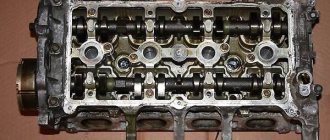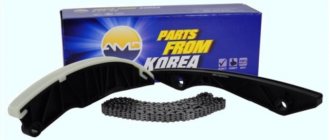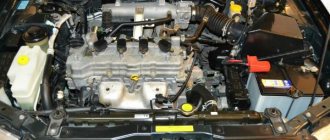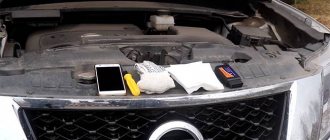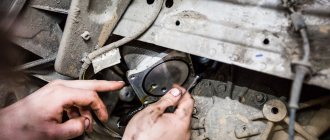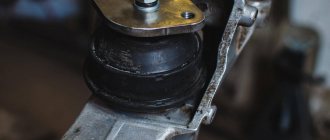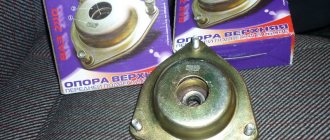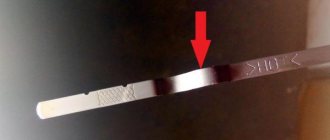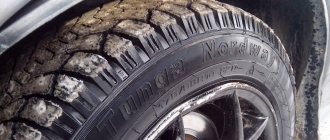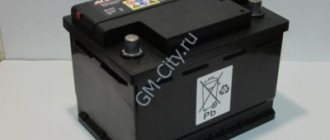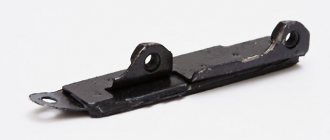Popular in the world and in Russia, in particular, the Nissan Qashqai crossover has been produced from 2006 to the present day. There are four varieties of this model: Nissan Qashqai J10 1st generation (09.2006-02.2010), Nissan Qashqai J10 1st generation restyling (03.2010-11.2013), Nissan Qashqai J11 2nd generation (11.2013-12.2019), Nissan Qashqai J11 2nd generation restyling (03.2017- present time). They are equipped with 1.2, 1.6, 2 liter petrol engines and 1.5 and 2 liter diesel engines. In terms of independent maintenance, this machine is quite complex, but with some experience you can handle it on your own. For example, change the timing belt yourself.
What is better to install on a Nissan Qashqai: a timing chain or a belt? We speak directly and honestly
In such an important question as to whether it is better to install a timing chain or belt on a Nissan Qashqai, the easiest way is to turn to the manufacturers of this Japanese car for an answer.
Traditionally, “Kashak” with a 2.0 engine is currently equipped with a timing chain, and in this case, such a well-proven and highly respected company can be completely trusted. Why do we often see timing belts for this brand in catalogs, which is so popular among Russians? Moreover, even made in Germany (Bosch) or American (Dayco)? It’s strange, but true: such belts are quite in demand, judging by requests in online automotive stores, for example. With what it can be connected? This issue is probably worth looking into in more detail. Especially the owners of this Japanese-made model.
When to change the timing belt on a Qashqai j11
The timing chain ensures the rotation of the engine shafts, due to which air is mixed with fuel in the required proportion and enters the vehicle’s power unit, while exhaust gases are removed from it. The operation of the gas distribution mechanism directly affects the performance of the engine, so its condition must be carefully monitored and measures taken if the slightest signs of malfunction are detected. When a timing chain or belt breaks, expensive vehicle repairs are inevitable.
Chain: pros and cons
The main argument for fans of chain drive is its durability. In fact, if the belt is designed for 40-60 thousand car mileage, then the chain can go 300 without problems (you just need to monitor it and tighten it periodically). This is probably why the Japanese, who traditionally value longevity and strength, install mainly a chain on the Nissan Qashqai.
Belt: pros and cons
- The belt is elastic and quiet, absorbs vibrations well from torsion, and does not require lubrication;
- Its faults can be easily diagnosed and eliminated without fundamental disassembly of the engine blocks. It can be changed according to the staffing schedule, when critical resource expenditure is still relatively far away.
The main disadvantage is vulnerability and dependence on external natural conditions, as well as technical ones: ingress of lubricant, for example.
If the belt breaks, the camshaft is no longer in sync with the crankshaft and the pistons hit the valves when they are open. Result: repair of engine compartment valves and many more troubles, including capital.
What do we end up with?
Actually, it is difficult to say which of the timing drives turns out to be more efficient in the end result. Perhaps this question is on a par with such rhetorical ones as: what is better - right-hand drive or left-hand drive, gasoline or diesel, manual or automatic.
Some users believe that the belt. Simply, making adjustments for its disadvantages, you need to carry out preventive maintenance more often, change it on time (or even at a predetermined date). Avoid contact with lubricant, protect as much as possible from the negative effects of the environment - and everything will be fine. On the other hand, the belt is trusted by manufacturers such as Volkswagen, Toyota and Opel. The belt is installed even on such advanced large V8 and V6 of these brands.
Well, among the fans of the “chain reaction” are BMW and Nissan
, which also cannot be trusted. So, to the question of what is better to install a timing chain or belt on a Nissan Qashqai, we did not find a clear and precise answer, so the easiest way is to trust the preference of the manufacturer. And this is for the 1.6 and 2.0 liter Kashak engines - still a chain.
Instructions
How to replace the timing chain with your own hands on 1.6 and 2.0 engines:
- Drive the car onto a pit or lift. Remove the right wheel.
- Unscrew and remove the engine cover. Remove the exhaust manifold.
- Drain all engine oil from the engine.
- Unscrew the bolts and remove the cylinder head cover.
- Rotate the crankshaft and place the number one cylinder piston in the TDC compression position.
- Raise the power unit with a jack. Unscrew and pull out the engine suspension support on the right side.
- Remove the alternator belt.
- Using a special puller, holding the crankshaft pulley from turning, unscrew its mounting bolts by 10-15 mm.
- Using puller KV111030000, pull the pulley off the crankshaft. Completely unscrew the pulley mount and remove the roller.
- Unscrew and pull out the suspension belt tensioner.
- Disconnect the harness connector from the variable valve timing system valve.
- Pull out the solenoid valve, having first unscrewed the bolt on which it is attached.
- This allows access to the side cover of the engine, under which the timing chain is located. Using a ratchet and sockets, remove the bolts securing this cover. Cut the sealing seam with a knife and remove the cover.
- Press out and fix the tensioner using for this purpose a one and a half millimeter rod inserted into the hole. Unscrew the bolt located on top with the bushing on which the chain guide is attached, and remove the guide itself. Do the same with the second guide.
- Now, finally, you can pull out the timing chain. To do this, you need to remove it first from the crankshaft sprocket, and then from the pulleys. If the fastening of the tensioner interferes, then remove it too.
- After that, it's time to start installing the new chain. The procedure is the reverse of that for removal. It is important to match the marks on the chain with the marks on the pulleys.
- Carefully remove any remaining sealant from the joints of the cylinder block and timing cover. Then carefully apply fresh sealant, trying not to exceed a thickness of more than 3.4-4.4 mm.
- Replace the timing cover and tighten the bolts. Install the remaining parts in the reverse order of dismantling.
The timing belt is installed in a similar way on a Qashqai with a 1.5 diesel engine. An important point - before removing the old belt, you need to place marks with a marker on the camshaft, pulley and head, marking the correct location. This will help you install the new belt without any problems.
Nissan Qashqai: Timing chain or belt? Pros and cons of the belt
Average price - rub. Also, when replacing the timing chain, the following parts are changed along the way: The timing chain is located on the side of the engine, under a special protective cover. Manufacturer: CGA. The average price of a spare part is RUB. The main advantage of this model is its lower price than the original; ET Typically this part requires replacement every km.
If you hear knocking and metallic rumble while driving, it means the chain has stretched and is slipping. If such symptoms occur, replacement is required immediately! There may also be a decrease in engine power, a thick bluish-colored exhaust, loud sounds in the muffler, a sudden increase in engine temperature for no apparent reason - it is by these signs, which most often appear not individually, but together, that the wear of an element can be easily determined. Have you bought any used car?
Be sure to inspect the chain, even if the owner says he recently changed it. In some cars, if there are problems with the gas distribution mechanism, a special indicator lights up on the dashboard. If the chain is not replaced in a timely manner, it will jump and damage the cylinder head.
Nissan Qashqai Club
Further events depend on many factors. In the best case, the valves simply bend.
In the worst case scenario, their constituent elements rupture and the cylinder block becomes unusable. On the left is an old, stretched chain. Each option has its advantages and disadvantages. When installing a single-row version, the engine power increases slightly and the noise level decreases.
The fact is that it is easier for the power unit to rotate one row of chain than two.
As for the belt, the life reserve of which these natural phenomena can significantly reduce; Another important quality: Nissan Qashqai has a timing belt or chain, this means the accuracy of the timing phase - with revs, the shaft alignment will be maintained, which ensures higher power characteristics of the engine; If the tensioner is working properly, the chain does not jump from tooth to tooth, without disrupting the distribution phases; The belt is afraid of oil, the chain is not; But the hydraulic chain tensioner functions rather poorly at low oil pressure, which still allows for the possibility of jumping a tooth during startup or abnormal pressure surges.
It can be changed according to the staffing schedule, when critical resource expenditures are still relatively low. The main disadvantage is vulnerability and dependence on external natural conditions, as well as technical ones: Plus, it does not need to be lubricated.
Belt drive faults are very easy to identify. To do this, you do not have to disassemble the power unit even partially.
The replacement of the unit can be completed even before the deadline. A huge disadvantage can and should be considered a strong dependence on external factors. We are talking about weather conditions, for example, as well as technical issues, such as oil ingress.
Regulations for replacing the timing belt on the K9K engine (diesel)
The rules for replacing the timing belt are set differently - European reference books indicate that the parts of the gas distribution mechanism (belt and roller) must be changed after 160 thousand km, Russian servicemen claim that replacement is required every 60 thousand km. This is due to the fact that the factory belt installed on a European car is of very high quality, which cannot be said about the parts supplied to the Russian market. The life of the timing belt is also affected by driving style, and it should be noted that Europeans drive much more carefully - without sudden starts and braking.
Create an account
Register for an account. It's simple!
Already registered? Sign in here.
Related publications
Merry Christmas everyone. The Qashqai hra2ddt (1.2 115hp) began to stall, and noise appeared in the timing belt area. During diagnostics, errors P0030 and P0017 appeared. They opened the windshield, the tensioner got damaged, and the chain jumped over the teeth. There were too many marks on the shafts for me to install a new chain. There is zero information on this engine on the Internet, I ask for help while the engine is opened and it’s a holiday. What marks should I put the chain on?
There are currently 0 users on the page
There are no users viewing this page
List of engines
For convenience, we will write the list of motors used on this model in a table.
| ICE model | Type | Volume | Power | When used |
| HR16DE | Petrol | 1.6 l | 114-115 l. With. | 2007-2013 |
| MR20DE | Petrol | 2 l | 140-141 l. With. | 2007-2013 |
| H5FT | Gasoline, turbocharged | 1.2 l | 115-130 l. With. | 2013-present time |
| K9K | Diesel, with turbine | 1.5 l | 103-110 l. With. | 2007-2010, not sold in Russia |
| R9M | Diesel, with turbine | 1.6 l | 130 l. With. | 2011-2013, not sold in Russia |
| M9R | Diesel, with turbine | 2 l | 150 l. With. | 2007-2013, not sold in Russia |
Engine design Qashqai 1.6
The Qashqai HR16 engine is 1.6 liter, it is a petrol 4-cylinder 16 valve unit. The in-line engine has an aluminum cylinder block with so-called “wet liners”. The cylinder head does not have hydraulic compensators. The thermal clearance of the valves is adjusted by selecting pushers of different thicknesses. Two camshafts are located in the cylinder head bearing housing. The timing drive uses a chain. For better fuel efficiency, two injectors per cylinder are used. Electronically controlled fuel injection. An actuator for the variable valve timing system is installed on the intake shaft.
Nissan Qashqai 1.6 engine cylinder head
The Nissan Qashqai cylinder head is made of aluminum alloy. An actuator for changing valve timing (phase shifter) is installed on the intake camshaft. The phase regulator mounted on the intake camshaft is controlled by increasing the engine oil pressure from the drive system. An increase in pressure causes an increase in the deviation of the camshaft from the nominal position relative to the valve axes. The oil pressure level is regulated by a solenoid valve controlled by the electronics of the Nissan Qashqai engine.
Necessary tools and spare parts, consumables
To change the timing chain with your own hands, you will need:
- ratchet with extension;
- socket heads for 6, 8, 10, 13, 16, 19;
- regular flat screwdriver;
- automotive sealant;
- fixture KV10111100;
- puller KV111030000;
- jack;
- container for draining engine oil;
- special puller for the crankshaft pulley;
- knife.
You will also need gloves, work clothes, rags and, in fact, a new replacement timing chain. It is better to do everything on a viewing hole or a lift.
Timing drive for Nissan Qashqai 1.6 engine
Qashqai timing chain drive . There are two chains. One larger one rotates the camshaft sprockets, the second a small one rotates the oil pump sprocket. The timing diagram is further in the photo.
Characteristics of the Qashqai 1.6 engine
- Working volume – 1598 cm3
- Number of cylinders – 4
- Number of valves – 16
- Cylinder diameter – 78 mm
- Piston stroke – 83.6 mm
- Timing drive - chain (DOHC)
- Power hp (kW) – 114 (84) at 6000 rpm. per minute
- Torque – 156 Nm at 4000 rpm. per minute
- Maximum speed – 178 km/h
- Acceleration to the first hundred – 11.8 seconds
- Fuel type – gasoline AI-92
- Fuel consumption in the city – 8.3 liters
- Fuel consumption in the combined cycle – 6.6 liters
- Fuel consumption on the highway – 5.6 liters
This engine digests AI-92 gasoline quite easily. Today in our country, the bulk of Russian-assembled power units are installed on Renault Duster. Some of the engines went under the hood of the Lada XRay. Depending on the settings, the engine on different models produces from 108 to 117 hp. It can be found on such Nissan models as Tiida, Sentra, Juke and others.
Exploitation
The power plants used in Nissan Qashqai cars, with proper maintenance, can “run” 500 thousand kilometers, and even this is not the limit. The manufacturer clearly indicates the basic rules for engine maintenance:
- Use recommended motor oils, taking into account the outside air temperature and the hydraulic characteristics of the lubricant. And although the manufacturer recommends changing the engine oil every 15,000 km, it is advisable to do this more often - after 7.5-10 thousand kilometers. This is due to the low quality of oils (there are many fakes on the market), which lose their performance properties faster than the engine manufacturer expects. Moreover, Nissan recommends changing the oil every 7,500 km under severe operating conditions.
- Use only certified coolants and change them every 60 thousand km. From time to time you need to check the coolant level in the tank and top it up if the level drops below the required level.
- Use gasoline with the octane number specified in the specifications. And although the use of AI-92 gasoline is allowed, it is advisable to fill the tank with AI-95 fuel of a reliable brand.
- Maintain the ignition system in good condition. If there are problems with starting, it is necessary to replace the spark plugs recommended by the manufacturer as soon as possible.
- Use oil filters recommended by Nissan. There is no need to choose a filter that only fits the thread. Air and gasoline filters should also be changed after completing the mileage specified in the documentation.
All these basic actions will significantly increase the service life of the motor, which is already long.
Nissan Qashqai timing chain replacement
Nissan Qashqai is equipped with petrol engines HR16DE (1.6), MR20DE (2.0) and diesel units M9R (2.0), K9K (1.5). On gasoline engines, regardless of the type of engine, the movement of the camshaft is driven by a chain drive. On diesel engines, the timing chain is only installed on the M9R (2.0).
According to the Nissan Qashqai technical data sheet, the procedure for replacing and checking the timing chain is provided for service 6 (90,000 km)
- engine error due to timing discrepancy
- poor starting on cold start
- knocking noises in the engine compartment when the internal combustion engine is running (from the timing drive side)
- spins for a long time
- poor engine thrust
- high fuel consumption
- a complete stop of the car while moving; when you try to start, the engine does not start, and the starter rotates more easily than usual
A timing chain with production part number 130281KC0A is installed on a Qashqai with a motor (1.6). The closest timing chains in terms of identity will be from the manufacturers Pullman 3120A80X10 and CGA 2CHA110RA.
CHECKING AFTER INSTALLATION
CHECKING AFTER INSTALLATION
Leak check
Before starting the engine, check the oil/fluid levels, including engine coolant and engine oil. If the level is below normal, add and bring to the required level. See chapter MAINTENANCE.
Check for fuel leaks as follows:
Turn the ignition key to the “ON” position (without starting the engine). After creating pressure in the fuel lines, check for fuel leaks at the joints.
Start the engine. While increasing the engine speed, check again for fuel leaks at the joints of the fuel lines.
Run the engine and check for unusual noise or vibration.
Note: If the hydraulic pressure inside the timing chain tensioner drops after removal/installation, slack in the guide may cause a clunking noise when the engine is started and immediately thereafter. However, this does not indicate a malfunction. The knocking will stop after the hydraulic pressure rises.
Warm up the engine thoroughly and make sure there are no fuel or oil/fluid leaks, including engine coolant and engine oil.
Bleed the air from the pipes and hoses of the relevant systems, such as the cooling system.
After the engine has cooled, check the oil/fluid levels again, including engine coolant and engine oil. If necessary, top up and bring to the required level.
Check table
| Component | Before starting the engine |
Nissan Qashqai has two generations: J10 (2006-2013) and J11 (2014 - today). The car is available with two gasoline engines - 1.6 liters (HR16DE) and 2.0 liters (MR20DE), as well as a 1.5 liter diesel engine (K9K).
